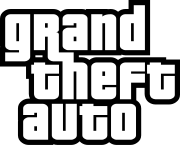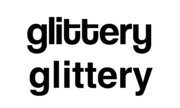Ray Larabie
Ray Larabie | |
|---|---|
| Born | 1970 (age 53–54) Ottawa, Ontario, Canada |
| Nationality | Canadian |
| Occupation | Typographer |
| Years active | 1996–present |
| Known for | Designing novelty computer fonts |
Ray Larabie (born 1970) is a Canadian designer of TrueType and OpenType computer fonts. Larabie is, as of 2013, the proprietor of Typodermic Fonts, which distributes both commercially licensed and shareware/freeware fonts. Larabie was born in Ottawa, Ontario, Canada.
Beginning in 1996, Larabie distributed his designs over the internet as freeware, operating as his own independent type foundry LarabieFonts.[1] Larabie was employed at Rockstar Canada and had contributed his designs to multiple video game titles, including the hit series' Grand Theft Auto and Max Payne, before he quit the company in 2002 to focus full-time on type design.[citation needed] He relocated to Nagoya, Japan in 2008.
Larabie primarily specializes in sans-serif novelty typefaces that are intended for use in desktop publishing and graphic design. The logo for Grand Theft Auto, for instance, uses Larabie's Pricedown font, which is based on the logo for the international game show The Price Is Right. In addition to game shows, Larabie has also used 1960s and 1970s graphic logos, computer emulation, and other inspirations to design his fonts; most of his designs are display faces not meant for body text. He is particularly known for his “ubiquitous futuristic and sci-fi fonts;” Larabie specialized in that style early in his career because he felt that, other than a few examples such as Bank Gothic, Microgramma and Eurostile, the market for that style was underserved.[2]
Two of his typeface families, Marion and Superclarendon, are released with macOS.[3][4] He also designed a unified typeface Canada 150 font that covers Canada’s both official languages but also its first nations languages.[5]
Samples
-
Pricedown, as seen in the Grand Theft Auto wordmark
-
Coolvetica (top, compared to its inspiration Helvetica below) is, according to Larabie, his most downloaded font by far.
-
Korataki, Larabie's most purchased commercial font, is used in the wordmark for video game Mass Effect.
See also
External links
- Ray Larabie at MobyGames
- Typodermic Fonts
- Twitter page
- Typodermic on MyFonts
- Typodermic on Fontspring
References
- ^ Cabarga, Leslie. Logo, Font, & Lettering Bible: A Comprehensive Guide to the Design, Construction, and Usage of Alphabets and Symbols. Cincinnati, OH: HOW Design, 2004. 237.
- ^ Tselentis, Jason (August 28, 2017). "Typodermic's Raymond Larabie Talks Type, Technology & Science Fiction". How. Retrieved October 29, 2017.
- ^ "Fonts included with Mavericks". Apple. Retrieved 8 July 2015.
- ^ Larabie, Ray. "Marion". MyFonts. Monotype. Retrieved 8 July 2015.
- ^ https://qz.com/574312/canadas-official-new-united-font-was-designed-to-include-aboriginal-languages/


